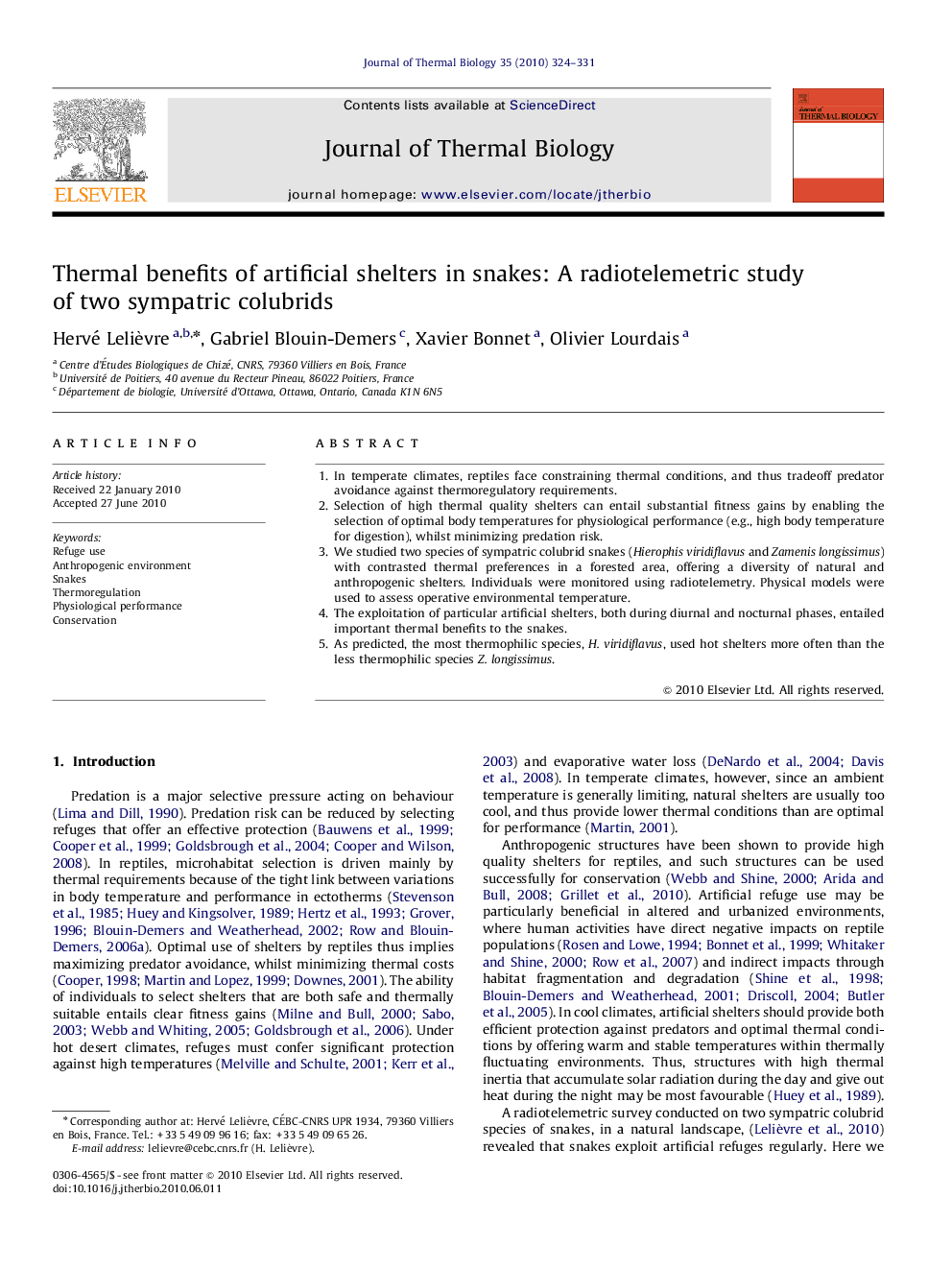| Article ID | Journal | Published Year | Pages | File Type |
|---|---|---|---|---|
| 2843308 | Journal of Thermal Biology | 2010 | 8 Pages |
1.In temperate climates, reptiles face constraining thermal conditions, and thus tradeoff predator avoidance against thermoregulatory requirements.2.Selection of high thermal quality shelters can entail substantial fitness gains by enabling the selection of optimal body temperatures for physiological performance (e.g., high body temperature for digestion), whilst minimizing predation risk.3.We studied two species of sympatric colubrid snakes (Hierophis viridiflavus and Zamenis longissimus) with contrasted thermal preferences in a forested area, offering a diversity of natural and anthropogenic shelters. Individuals were monitored using radiotelemetry. Physical models were used to assess operative environmental temperature.4.The exploitation of particular artificial shelters, both during diurnal and nocturnal phases, entailed important thermal benefits to the snakes.5.As predicted, the most thermophilic species, H. viridiflavus, used hot shelters more often than the less thermophilic species Z. longissimus.
